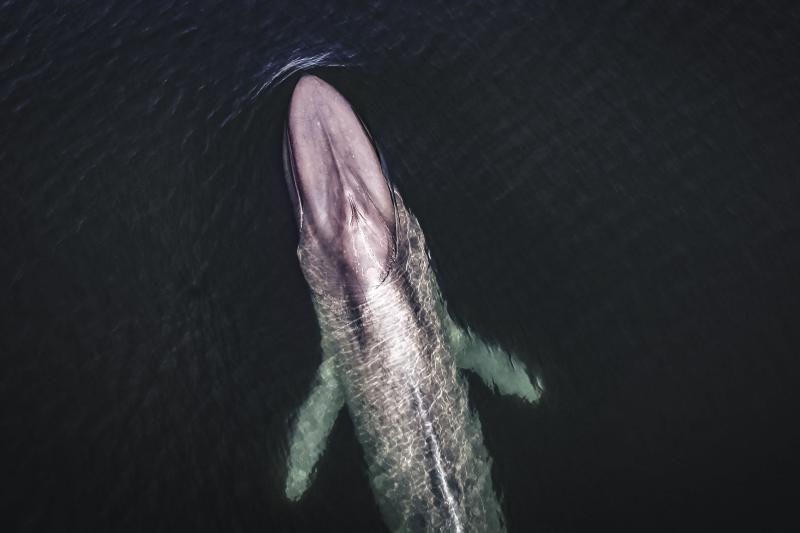Join us as we celebrate Whale Week, February 16–20, 2021, leading up to World Whale Day on February 21, 2021. Check out whale features and videos below and stay tuned for more new content throughout the week!
Whale Features
Celebrate Whale Week with Us
A message from Donna Wieting, Director of NOAA Fisheries Office of Protected Resources. To celebrate the wonder of whales, learn how our scientists and managers work to conserve and protect these magnificent creatures.
11 Cool Things about Whales (Plus Dolphins and Porpoises!)
Whales, dolphins, and porpoises belong to a group of marine mammals called cetaceans. NOAA Fisheries works to ensure the conservation of all cetaceans, which are protected under the Marine Mammal Protection Act.
Check out cool facts about these marine mammals
New Species of Baleen Whale in the Gulf of Mexico
NOAA Fisheries announces scientific research paper that describes a new species of baleen whale in the Gulf of Mexico.
Learn more about the new species
Species in the Spotlight
Some whale populations, such as the Cook Inlet beluga, North Atlantic right whale, and Southern Resident killer whale have been identified as Species in the Spotlight due to their endangered status and declining populations. We work with many partners to protect and recover species listed under the Endangered Species Act.
As “Killer Whale Tales” Goes Virtual, its Reach Extends Around the World
A former teacher engages students with the wonder of the Southern Resident killer whales.
Learn more about "Killer Whale Tales"
North Atlantic Right Whale Calving Season 2021
The critically endangered North Atlantic right whale population has been declining for the past decade. With fewer than 400 whales left, researchers closely monitor the southeastern United States for new offspring during the calving season.
Meet the mothers and calves of the 2021 season
Help Endangered Whales: Slow Down in Slow Zones
All boaters can help save right whales by slowing down in Right Whale Slow Zones.
Learn how you can help endangered whales
10 Things about North Atlantic Right Whales
Learn more about North Atlantic right whales
New Genetic Study Makes it Possible to Accurately Estimate Age of Endangered Whale While it is Alive
Preliminary results raise questions about whether Cook Inlet beluga whales are reproducing much later than initially thought.
Learn more about the new genetic study
Studying Endangered Cook Inlet Beluga Whales in Alaska
Cook Inlet beluga whales are one of five beluga population stocks found in U.S. waters. They are the only beluga population listed under the Endangered Species Act.
Learn more about how we study endangered Cook Inlet beluga whales in Alaska
Whale Videos
Species in the Spotlight: North Atlantic Right Whale
Species in the Spotlight: Southern Resident Killer Whale
Species in the Spotlight: Cook Inlet Beluga Whale
There are five populations of beluga whales in Alaska, but only the Cook Inlet population is endangered. This video spotlights the different research projects underway to help recover this species, and how you can help.
Slow Zones for Right Whales
North Atlantic right whales are one of the most endangered large whale species. Collisions with vessels are one of the major threats these animals face. NOAA has announced Right Whale Slow Zones to help reduce the risk of vessel strikes.
Whale Recovery in Alaska
Learn more about the science behind whale recovery in Alaska. See how NOAA scientists use photo identification and study humpback whale diets to better understand the population.
Using Aerial Technology to Help Stranded Cook Inlet Beluga Whales
This video highlights imagery captured during one of the unmanned aircraft system (UAS) flights to two belugas, which likely became stranded in the mudflats during low tide when the waters of Turnagain Arm were too shallow for them to swim away.
Belugas Count!
Understanding Threats to Whales
Marine Mammal Unusual Mortality Events
To understand the health of marine mammal populations, scientists study unusual mortality events. Investigating these events is important because they can serve as indicators of overall ocean health.
Learn more about marine mammal unusual mortality events
Humpback Whale Disentangled Off New York All Thanks to a Team Effort
NOAA Fisheries was notified by the U.S Coast Guard of distressed humpback whale in the Ambrose Channel of New York on Monday, July 27. The team successfully disentangled the whale on July 30 ending a multi-day response.
Learn more about the humpback whale disentanglement
NOAA Enforcement Deploys Remotely Operated Vehicles to Patrol the Seas
NOAA’s Office of Law Enforcement is increasing efforts to help ensure compliance with gear regulations in the Northeast/Mid-Atlantic American Lobster Trap/Pot Fishery. OLE is deploying remotely operated vehicles that will make inspecting offshore lobster gear more efficient.
Sans Tourists, Juneau Scientists Partner to Capture Data on Humpback Whales
Research aims to gather baseline information on whale behavior and biology in absence of vessels.
Learn more about capturing data on humpback whales
Give Whales Bubble Room in Alaska
Humpback whales use a feeding technique called bubble net feeding to catch their prey (mainly krill) at the surface. In Alaska, humpback whales are protected by federal regulations that prohibit approaches within 100 yards and vessel operations that may cause take. When viewing humpback whales from a boat, it is important to make sure that your presence does not affect their behavior.
Learn more about giving whales proper space
New Online Course for Spotting and Reporting Entangled Whales in Alaska Waters
The foundation of responding to entangled whales is the on-water community. NOAA’s Alaska Marine Mammal Stranding Network depends on recreational and commercial boaters and other ocean users for spotting and reporting entangled whales off Alaska’s coast. That’s one reason NOAA Fisheries has teamed up with The Nature Conservancy (TNC) to develop a new online training course to help them report entanglements.
Learn more about this online course


















